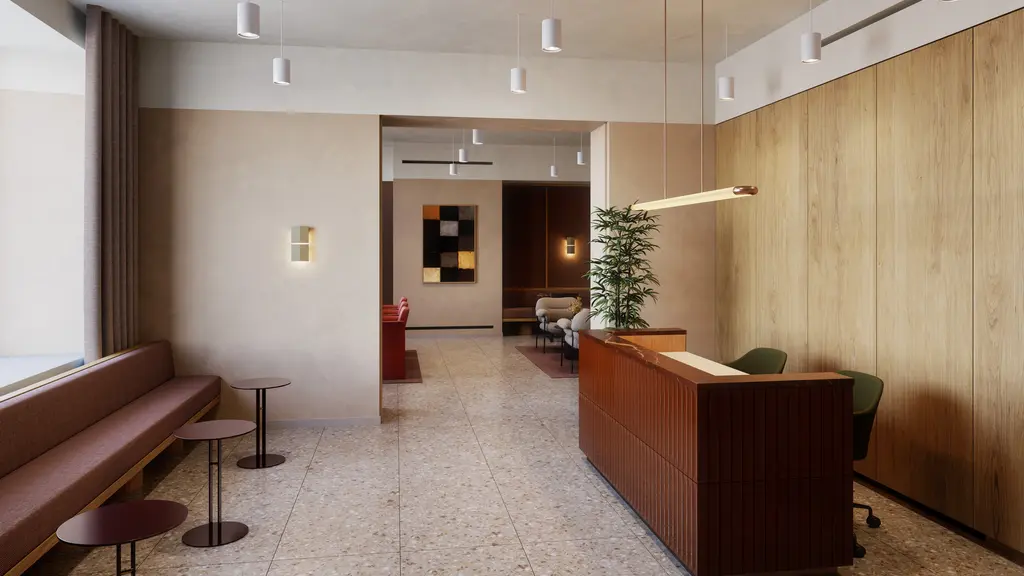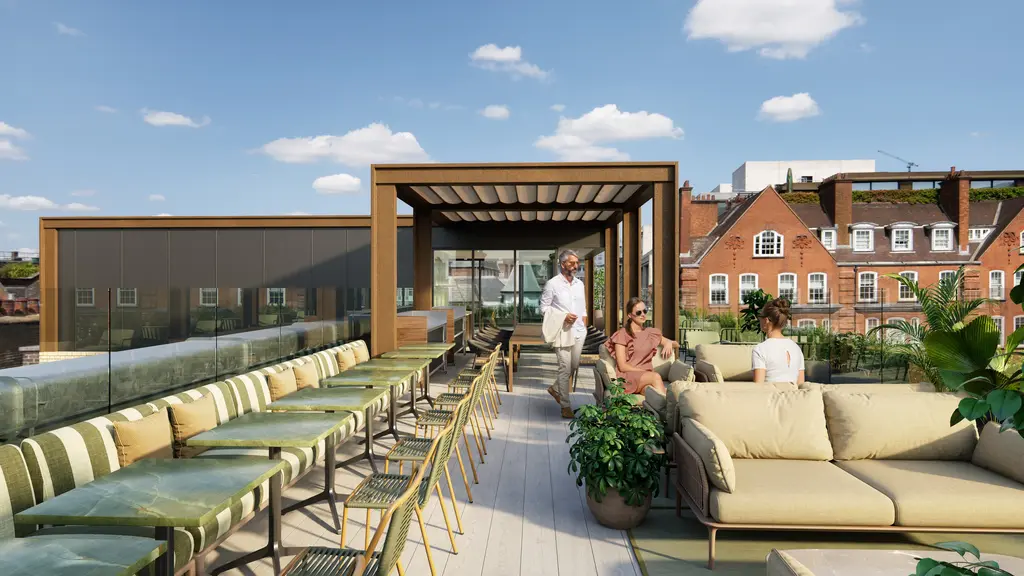1. How did the architectural and cultural history of 67 Grosvenor Street shape your approach to reimagining the prestigious address?
We begin every project by exploring a building’s origin – why it was constructed, who it was built for, and how it has evolved. Grosvenor Street was one of the first roads laid out in Mayfair by the Grosvenor Estate, lined with beautiful Georgian townhouses that quickly became some of the city’s most sought-over homes. From the late 19th century onwards, the area transitioned from domestic to commercial use, with many of these properties becoming offices for professional, financial and luxury-sector occupants.
67 Grosvenor Street has an interesting story. Originally a single townhouse, it was combined with No. 68 in the 1950s for commercial use, creating unusual quirks such as level changes, whilst much of its historic fabric and original layout was lost. We wanted to understand how we could bring back some of its character and think about the two townhouses as a single, coherent whole.
The retrofit opens up the plan, so the two townhouses read as one, replacing a series of small, cellular rooms with generous, flexible floorplates. The interiors draw from the building’s residential past, reintroducing a sense of scale, tactility and crafted detail rooted in the Georgian townhouse typology. A visit to No. 66 next door – which still holds much of its original fabric – informed an approach centred on quality and longevity, creating a design that feels authentic to the building’s history.
2. What are your main goals and aspirations for the project?
Our design was anchored by three core objectives. The first was to create an architectural response that genuinely feels at home in Mayfair – rooted in the character of 67 Grosvenor Street itself and aligned with the heritage of the wider Grosvenor Estate. The second was to strengthen the connection between the interiors and the garden. Because the site combines two original townhouse plots, it benefits from a much larger private courtyard than is typical for Mayfair, and we wanted to make that green space a defining feature of the experience. The third was to deliver best-in-class tenant amenity, transforming previously dim, underutilised rooms into hospitality-led spaces, including a club lounge, bar, flexible work areas and shared meeting rooms, alongside generous showers and changing areas.
3. Did any of the building’s existing features particularly inform the design? How so
As you approach 67 Grosvenor Street, you look at the beautiful façade and think “wow, I wonder what’s inside?” We wanted the interiors to reflect the sense of quality that this Georgian street elevation suggests; timeless, quality-driven, distinct – a design that feels like it’s meant to be in 67 Grosvenor Street, rather than a fit out that could sit in any building. We removed postwar partitions to recover the original scale and proportions, allowing the offices and shared spaces to feel generous and brighter.
Although most of the historic fabric had been lost, we looked to the material richness of its listed neighbours to help re-establish character, using warm timber, burgundy tiling and carefully detailed joinery as a continuous design thread throughout. The two-tone timber treatment – plantation teak framed in darker stained oak – brings depth and tactility, so the joinery feels crafted rather than monolithic. The idea was that the character promised by the façade carries straight through the moment you step inside.
4. How did the building’s position within the Mayfair Conservation Area shape the design approach?
The conservation area context meant the street elevation had to remain largely untouched, so our approach to the front façade was very light and respectful to its Georgian neighbours. Most of the change happens to the rear, where we were able to make discreet interventions to improve air quality, building efficiency and servicing.
The landscape design centres around retaining a beautiful old London Plane tree in the courtyard, with seating and planters built into the garden walls so that everything feels integrated rather than added on. A mix of smaller nooks and larger group settings makes the garden genuinely usable throughout the day, and the whole space reads as a natural extension of the architecture rather than a separate element.
5. How does the project blend the structure’s storied heritage with a sophisticated contemporary design?
The blend comes from allowing the building’s residential heritage to shape the way people experience the interior today. Although it now functions as a workplace, it still feels domestic in scale – comfortable, calm and welcoming – which creates a very different atmosphere to a typical commercial office. People no longer want to be tied to a single desk all day, so the revitalised building offers a variety of places to work and spend time: soft lounge seating, focus booths, bar areas, a mix of meeting room sizes and a series of seating pockets in the garden.
That character is reinforced through the material palette, which provides continuity throughout the building: warm burgundy tiles, stone surfaces and two-tone timber joinery give depth and tactility without feeling decorative for decoration’s sake. It is contemporary in how it is used, but the proportions, materiality and sense of comfort stem directly from the townhouse typology, meaning the building’s heritage and the modern workplace reinforce one another rather than compete.
6. Which aspects of the project do you think will really elevate the day-to-day experience of Grosvenor’s members working in the building?
What will make working here special is the variety and quality of the spaces, all anchored in the building’s distinct identity. Each office is slightly unique, with its own blend of open desks, breakout areas, lounge seating and a meeting room – so tenants have the right environment for different types of work without leaving their floor.
The garden is a major asset, and many of these spaces look out onto it, giving everyday working life a calm, green backdrop that’s very unusual in Mayfair. On the street side, executive offices overlook Grosvenor Street itself, reinforcing the prestige of the address. Altogether, the building offers a rich mix of settings that feel tailored and distinctive, rather than standardised, and that distinct identity is what will make members’ day-to-day experience stand out.
Discover our new offices



